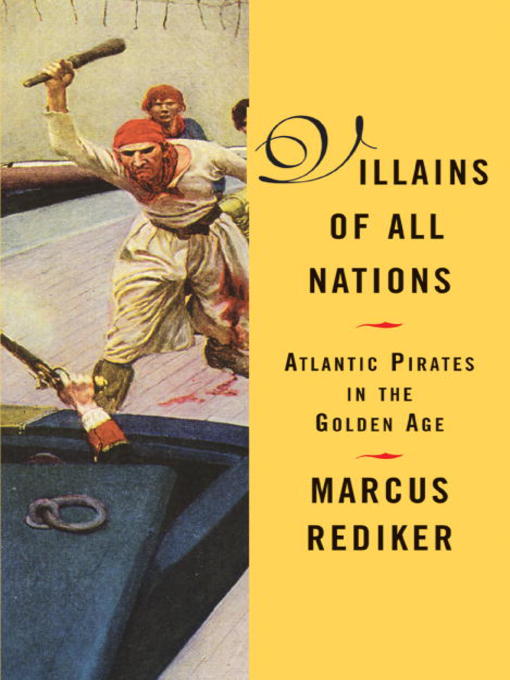
Villains of All Nations
Atlantic Pirates in the Golden Age
کتاب های مرتبط
- اطلاعات
- نقد و بررسی
- دیدگاه کاربران
نقد و بررسی

April 19, 2004
Rediker (Between the Devil and the Deep Blue Sea
), a historian of maritime labor, opens his immensely readable study of the "golden age" of piracy (1716–1726) with the spectacle of an execution in which a notorious pirate, unrepentant and seemingly unconcerned to be facing death, reties the knot of his gallows noose with defiant ironic humor. For Rediker, pirates were bold subversives who challenged the prevailing social order and empire building of the five main trading nations. Emphasizing the hardship, injustice and brutality the average sailor faced in his career, Rediker suggests that piracy offered a more egalitarian seafaring life, as well as opportunities for revenge on the ruling class. Rediker uses captives' accounts, among other sources, to show how pirates meted out their own system of justice, torturing captains reputed for their harsh treatment of sailors, yet sparing others known for fairness. He explores pirate dialects, rituals and symbols, and shows how pirates inverted social norms, creating a carnivalesque way of life that featured fraternal solidarity, a precapitalist share system and the wanton destruction of property. A chapter on picaresque women pirates reveals links between their iconic image and Delacroix's painting Liberty.
Using statistics to show convincingly that by the 1720s piracy posed a real threat to global trade, Rediker describes how nations launched a military-legal campaign against piracy, with cannon battles and gruesome public executions. Rediker uses this apocalyptic close of piracy's golden age to explore its suicidal side. Although Rediker's short study does not tackle later myths of piracy, it provides penetrating background to our enduring cultural fascination with the seafaring outlaws. Illus.

June 1, 2004
The so-called golden age of Atlantic piracy was the first quarter of the eighteenth century. Lawless rebels, including well-known men such as William Fly and Edward Teach--as well as numerous social outcasts, debtors, escaped slaves, and various predatory personalities--used terrorist tactics to prey upon merchant ships from New England waters to the Spanish Main. Rediker's revealing and often surprising work views pirates and piracy within the context of the social, political, and economic milieu of the eighteenth century. He does much to deromanticize pirate life, for these were brutal, sometimes heartless men, and many of them were prime examples of a variety of social pathologies. Yet, as Rediker illustrates, pirates often did create a distinct subculture with its own set of values, codes of honor, and taboos. Rediker is most interesting and provocative in his comparisons between this subculture and the broader, "respectable" society that helped engender it. An informative look at a popular topic.(Reprinted with permission of Booklist, copyright 2004, American Library Association.)

























دیدگاه کاربران